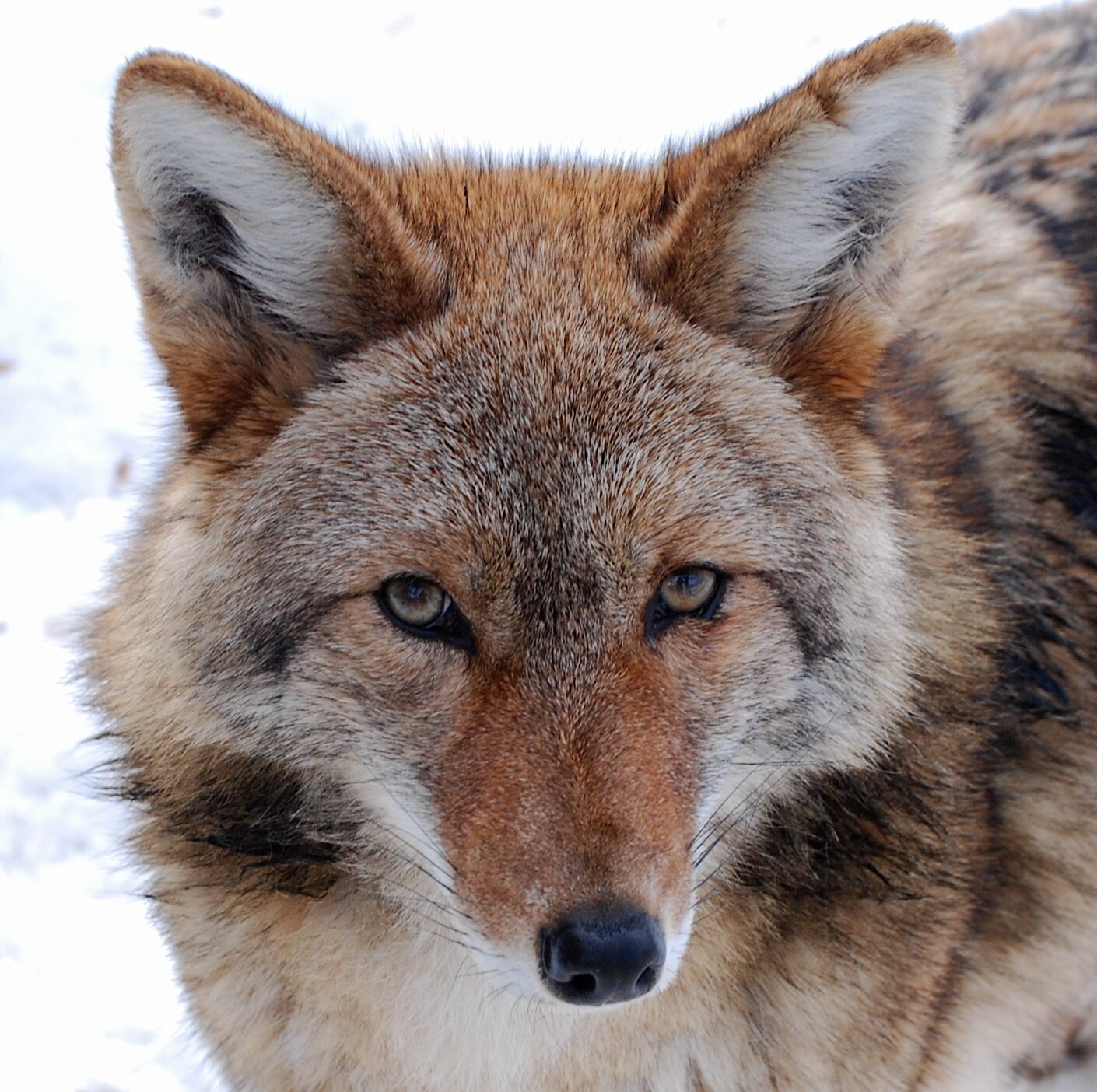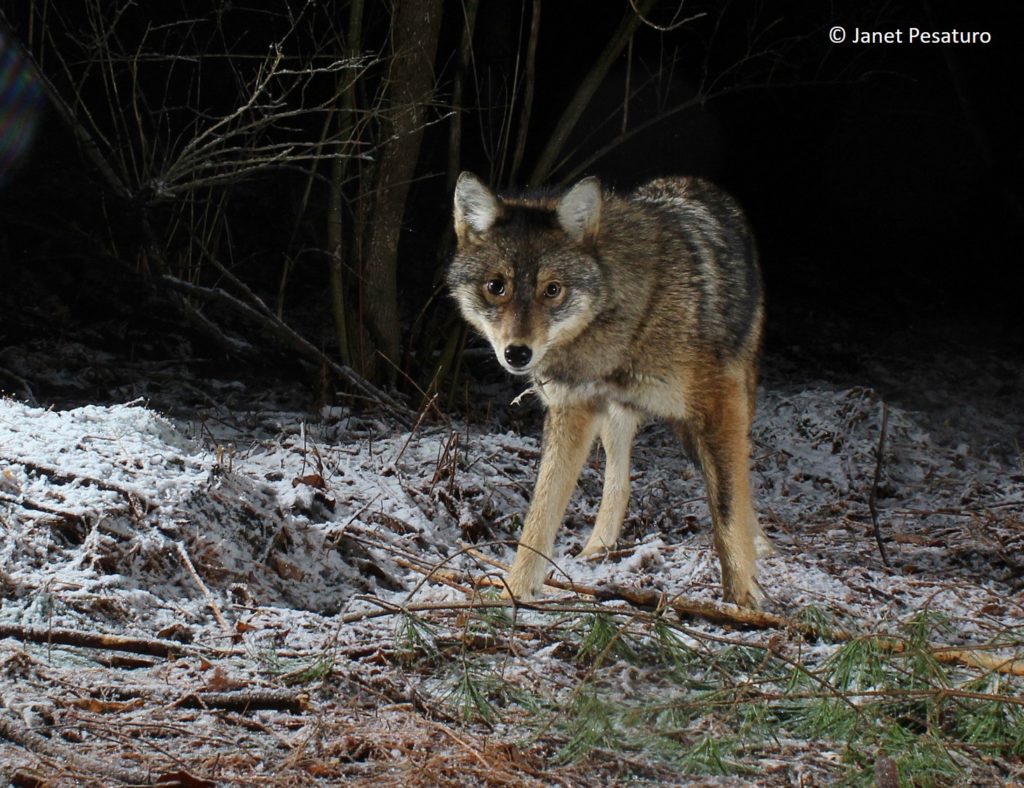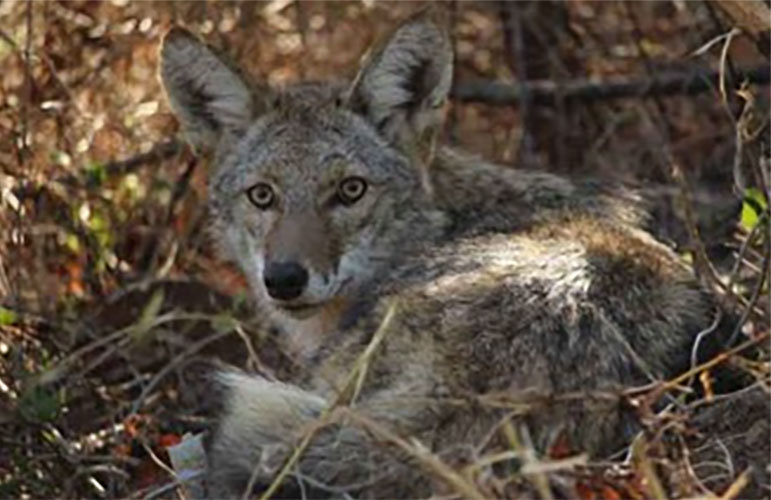
“It’s largely a human-dominated landscape, and they’re probably the best predator for that landscape with the way it is. “Eastern coyotes are extremely well adapted to the human landscape, which is why they’re doing so well in North America,” Rutledge said. When the Canadian government dubbed eastern wolves a species, the animal was added to the threatened species list. That’s currentlly not a big deal for coyotes, which are abundant, but it is for eastern wolves, which Rutledge said are also a hybrid. The potential problem is that hybrids are often dealt with differently than species when assigning statuses like threatened and endangered. Regardless of where that debate goes, Rutledge wants to keep predators like eastern coyotes and eastern wolves on the landscape. Maybe it should be based more on what’s evolutionarily important or what’s able to adapt to change.”

“Perhaps conservation needs to catch up with that model and move away from the species concept because it’s getting very difficult. “With genetics and everything that’s come out about what can interbreed and what kinds of things can produce viable offspring, it’s changed how we define species,” Rutledge said.

Since mules are almost always sterile, the animal is called a “sterile hybrid” instead of a species. Simply put, if the offspring of two individuals could reproduce, it belonged to a species.Ī classic example is a horse and a donkey, which produce a mule when they mate. Before genetics, viability was the answer. She explained that the first question when assessing a species is to determine whether it’s taxonomically valid, which opens a can of worms because scientists have differing opinions on what defines a species. Rutledge said eastern coyotes could evolve to become an effective top predator in the east, and her concern now is how they’re managed as a species. “Not only do people call them different things, but they’ve been called different things over time.” “There is a lot of terminology in what we call these critters, and it makes it very confusing,” Rutledge said. Similarly, eastern wolves have been called Great Lakes wolf, Great Lakes boreal wolf, eastern Canadian wolf, gray-wolf subspecies and eastern timber wolf.

Variation in the way individuals look, along with what people call them, has probably created the most confusion as to what the creature is.Įastern coyotes have been called things like brush wolf, tweed wolf, coy wolf and coy dog. We say it was with an eastern wolf, others say it was with a gray wolf.”Įither way, there is no question regarding the larger size of eastern coyotes, something they probably inherited from their wolf genes. “There’s this hybridization event that happened 100 years ago, but there is some argument about what it was with. “Eastern coyotes are different than western coyotes without question,” Rutledge said. Monzon’s research also suggests that the animals carry domestic dog genes – more on that later.įirst there’s the story of western coyotes, a species that’s smaller and more fox-like than their eastern counterparts, mating with eastern wolves, which live in Canada. It turns out eastern coyotes are a hybrid of eastern wolves and western coyotes. They essentially determined that, in a way, everyone is right. The scientists’ answer to the coyote-coydog-wolf question almost seems inconclusive, but it’s not. She provided her findings in an article published this year, and they’re similar to those found by Javier Monzon, an assistant professor of biology at Pepperdine University in California, who also investigated eastern coyote genetics in 2012 while teaching at SUNY Potsdam. Linda Rutledge, a post-doctoral researcher and biology instructor at Trent University, wanted to go beyond the physical attributes of Adirondack canids and instead determine their genetic makeup.

New research suggests otherwise, but it’s not that black-and-white.


 0 kommentar(er)
0 kommentar(er)
